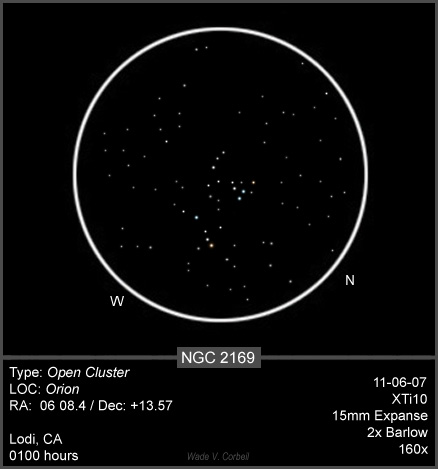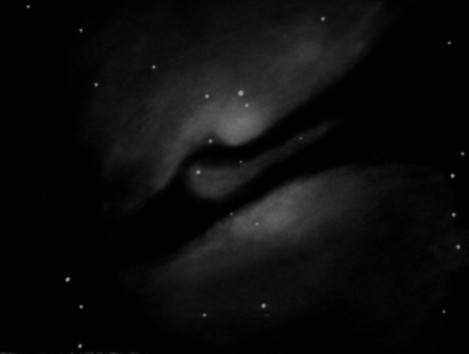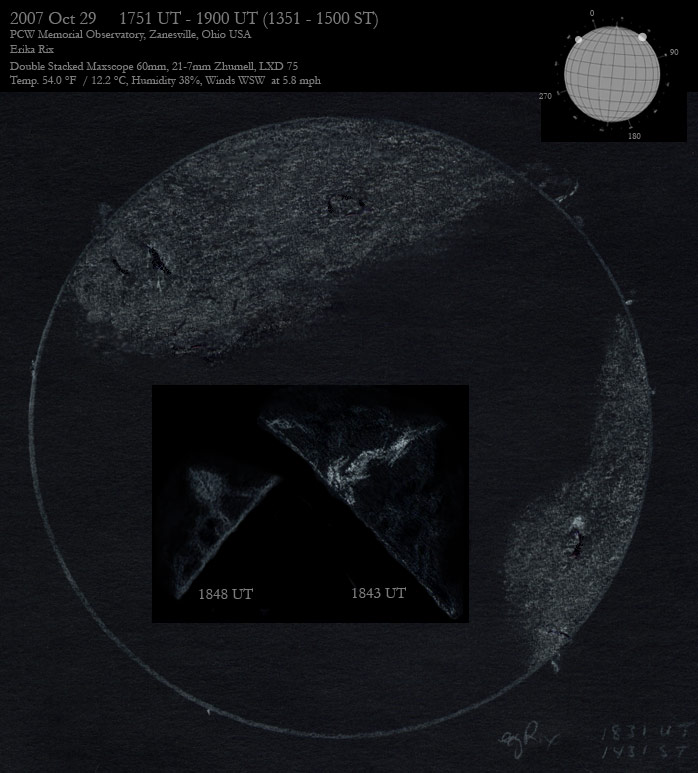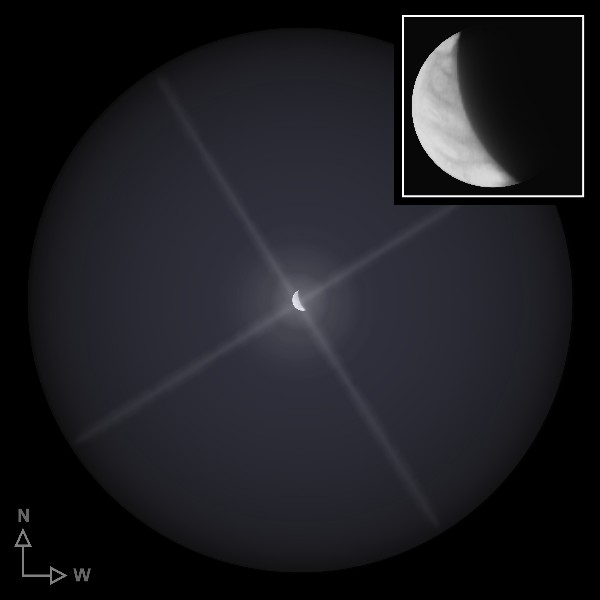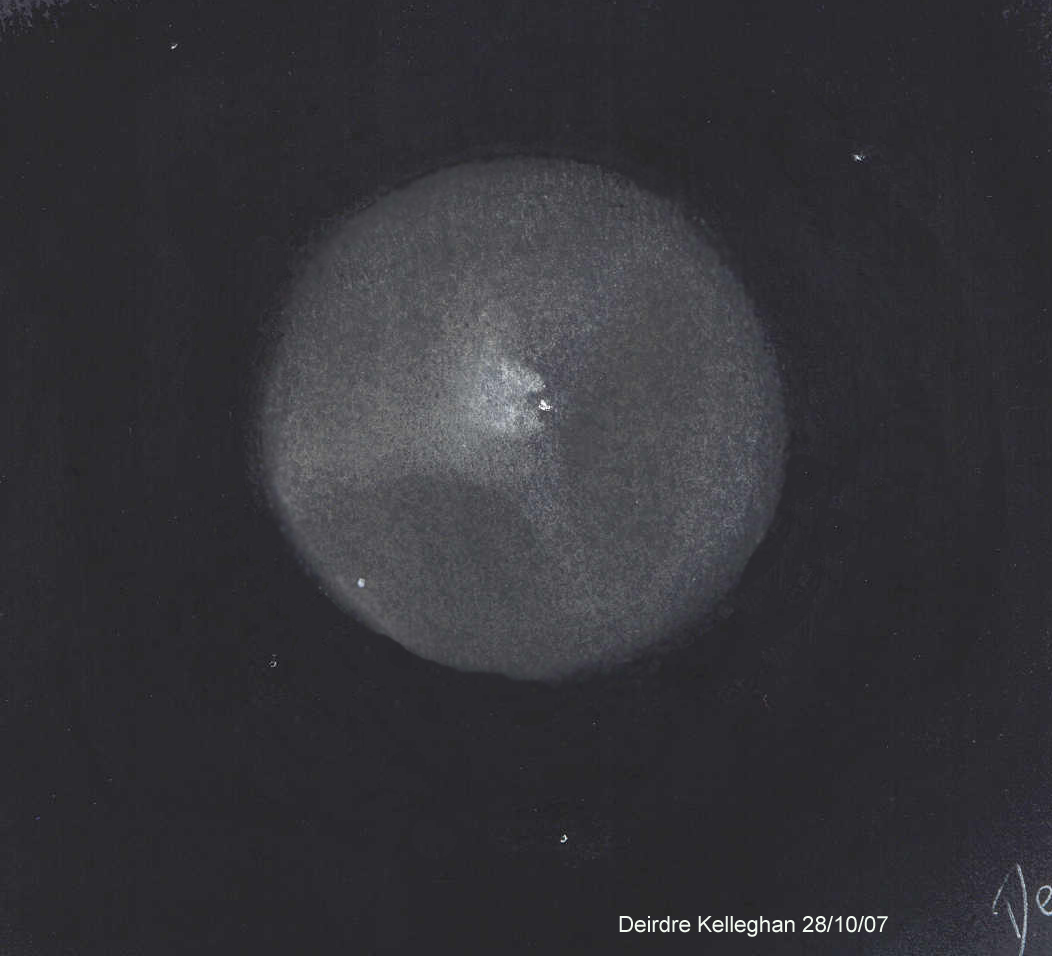Crater Burg and Lacus Mortis
By Frank McCabe
Crater Burg is a young, sharp rimmed crater formed less than 900,000 years ago and can be seen resting at the east center of the ancient Lake of Death or Lacus Mortis. This 40 km. crater with its central peak and well defined ejecta apron is in stark contrast to the old pre-Imbrium crater, Lacus Mortis which embraces it. Interesting terracing can be seen clearly in the low sunlight.
The Lake of Death crater is a large one as craters go, nearly 160 km. in diameter. Its features include rilles across the floor, a few of which are fairly long. Perhaps these floor fractures are from doming of the floor as some lava entered from below. The central bulge of this crater can be seen in grazing sunlight much like crater Petavius. Ridges emanating from the northwest and southwest outer walls of Burg can be seen crossing the lake floor all the way to the rim of the Lake of Death. Just to the west of the south ridge of Burg is a straight scarp that continues as a rille as it nears the lake center. It appears much like Rupes Recta. The east face is brightly illuminated by the setting sun near the southern wall of the lake and it is much taller than the more famous straight wall.
Further west on the lava floor is Rima Burg a 100km. long slump in the floor. It is nearly in line with a shadowed valley seen in the hills beyond the boundaries of Lacus Mortis.
Other craters to the east of Burg are superimposed on the old destroyed rim of Lacus Mortis. They are Plana (45 km.) with a central peak sticking up above the lava flooded flat floor and Mason (43 km.) the other crater to the north which is nearly a twin without the central mountain.
Sketching:
For this sketch I used: black Strathmore 400 Artagain paper, 9”x12”, white and black Conte’pastel pencils and a blending stump. Brightness was slightly decreased after scanning.
Telescope: 18 inch f/5 Dobsonian and 9mm eyepiece 222x
Date: 10-30-2007 6:05-7:00 UT
Temperature: 11°C (52°F)
Clear, calm
Seeing: Antoniadi III
Co longitude: 142.8°
Lunation: 19.3 days
Illumination: 75.1 %
Frank McCabe



